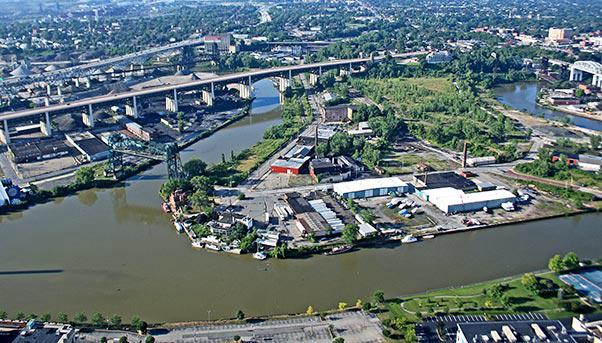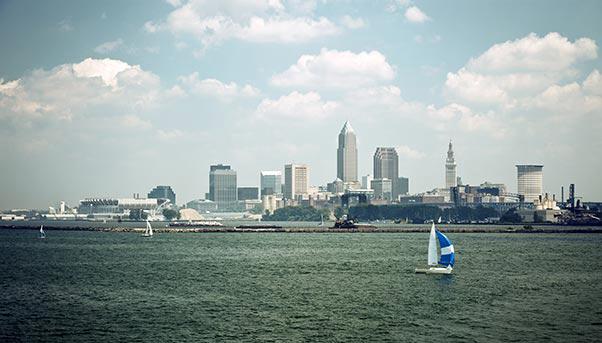
Whenever rains hit Cleveland hard in the summer, there is always the risk that the city will have to close the beaches for a few days.
The excess water from a storm can overwhelm the sewage system and force the city to flush it with raw sewage into Lake Erie. It has to do this to avoid having its streets flooded and its water treatment plants damaged.
The discharges lead to bacteria, pathogens and other pollutants lowering the quality of the water in the lake, killing fish and threatening public health. In short: one of the Great Lakes of North America becomes unsafe to swim close to shore.
«Sometimes after a heavy rain they have to close the beaches at Edgewater,» said a local television reporter during a broadcast from the lakeshore park more than a year ago. «That is the end-result of a problem that will cost $3 billion to fix.»
That is how much this city in the eastern U.S. state of Ohio is spending to address a problem that has plagued it for as long as a century. «As in most urban areas across the nation, Greater Cleveland’s earliest sewers… are combined sewers,» explains the local water authority on its website. «Built around the turn of the nineteenth century, these sewers carry sewage, industrial waste, and stormwater in a single pipe.»
Every year, Cleveland discharges an estimated 4.5 billion gallons of raw sewage into the lake. Although the volume is half of what it was in the 1970s, the city needs to reduce it even more to meet standards set under the Clean Water Act.
Since 2011, it has been working on Project Clean Lake, part of a broader effort to collect, store and treat these waters and reduce the level of pollution in the lake.
The investment is huge, but it will be made over the course of 25 years.

By then, Cleveland expects to have reduced the annual volume of discharges to 494 million gallons. That means more than 98% of the heavy flows of rain water and sewage in the combined sewer system will be treated and rendered safe, according to the local water authority, known as the Northeast Ohio Regional Sewer District.
The project, one of the city’s largest for infrastructure, includes the construction of eight storage tunnels and the upgrading of water three treatment plants.
Workers have just started on the Dugway Storage Tunnel.
The Mill Creek Tunnel was completed several years ago and the Euclid Creek Tunnel System in 2015.
The Dugway is being built by Salini Impregilo SA Healy JV, a joint venture between Salini Impregilo and SA Healy, a subsidiary of Lane Construction, itself part of Salini Impregilo.
It is the latest of a number of projects being done by the Group that has a focus on the environment. In Washington, D.C., it is excavating a tunnel to help the capital do the same thing: reduce sewage discharges in its rivers.
The Dugway will be 27 feet in diameter and stretch for 4.5 kilometres under east Cleveland. Once precast segmental concrete line its walls, the internal diameter will be more like 24 feet.
The $153 million tunnel will range in depth from 200 to 230 feet below ground. It will have six shafts of varying diameters and depths.
The Dugway will store and convey combined sewer overflow from ancillary collection and relief sewers. Rather than replace the existing pipes, it will handle any additional flow created by a storm or heavy rains. It will store up to 58 million gallons of water and sewage and hold them until the rains subside and the Easterly Sewage Treatment Plant has the capacity to treat them.
Work on the Dugway is scheduled to be completed in 2020.

